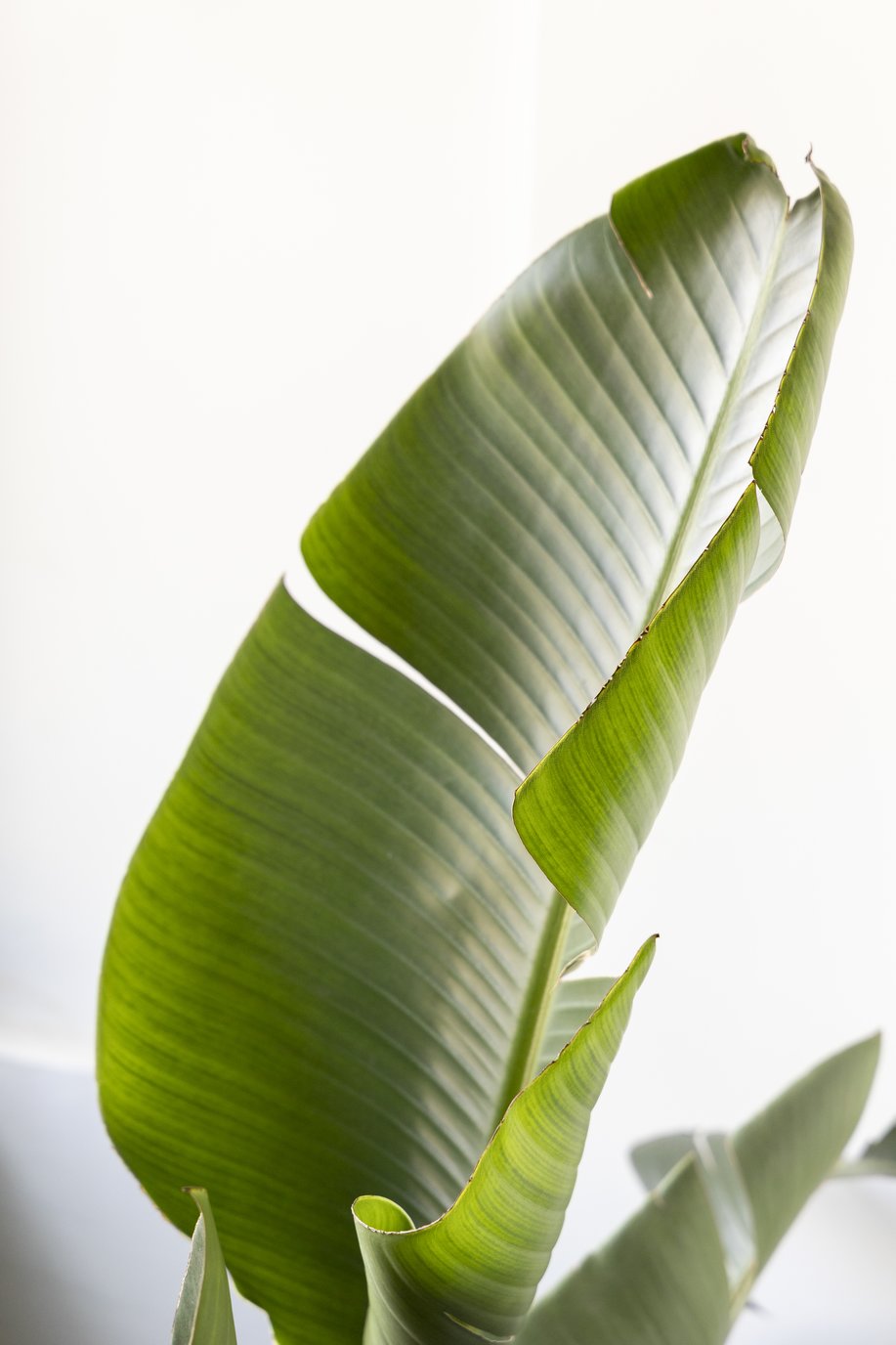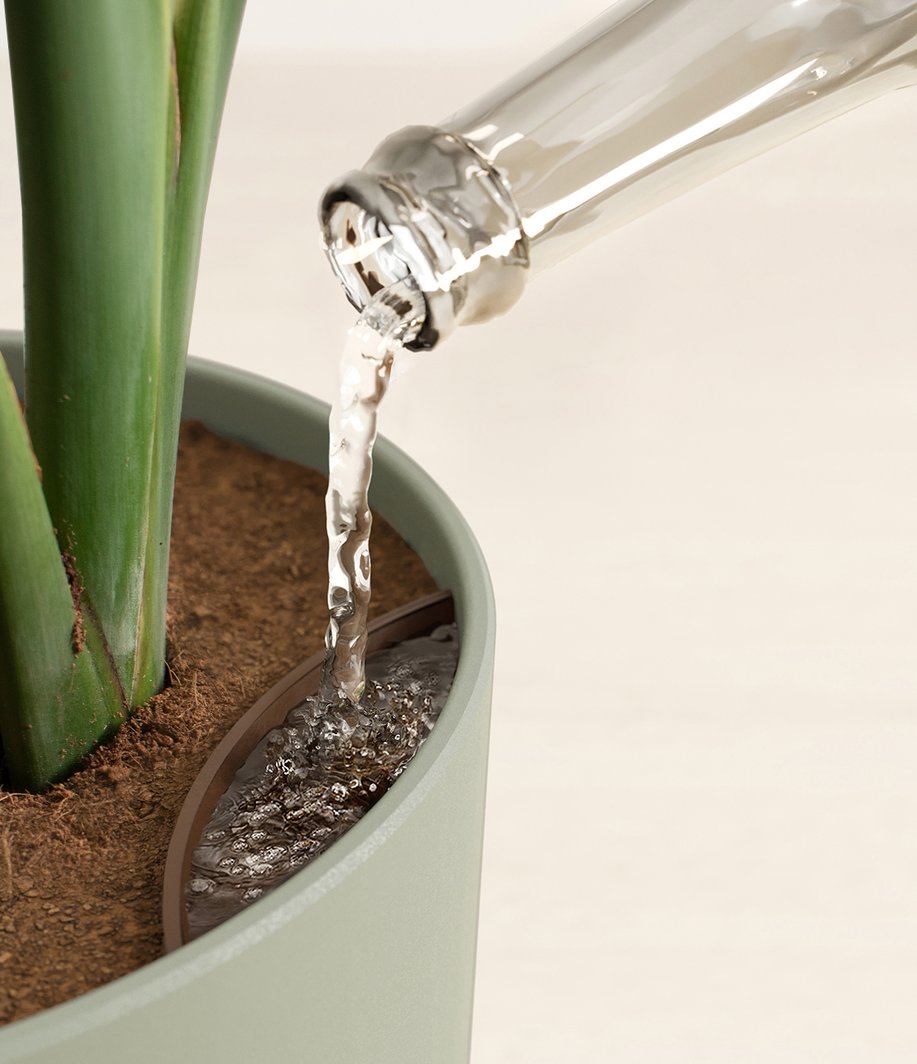Why Are the Leaves of My Bird of Paradise Curling?
Birds of Paradise plants are relatively easy to care for if you know what they require to be happy and healthy. The plant is hardy and adaptable, but now and then, you might see warning signs that something in its care is off balance. If you see Birds of Paradise's leaves curling, something in its environment needs to be corrected. The reason could be several things, so you may need to use the process of elimination to figure it out. Keep reading to learn about the various factors that could be contributing to the Bird of Paradise's curled leaves.
1. Lighting Issues
The one environmental factor that needs to be just right for the Bird of Paradise to flourish is lighting. The plant's preference for lighting is moderate, direct light, or bright, indirect light. If the lighting is too much or too little, the result can be the same. Too much direct light could make your Bird of Paradise's leaves curl or burn, and too little light can cause wilting and curling.
Solutions
Often, especially in the summer, direct sunlight can be too harsh at certain times of the day and cause your leaves to burn and curl because of the high temperatures. Avoid this by placing your Bird of Paradise in a spot in your home that has very bright indirect light. Indirect means the light should be diffused. One way to do this is by placing your plant near a window with a good amount of natural light and then a sheer curtain over the window.

2. Temperature Issues
The Bird of Paradise is a tropical plant accustomed to warmer climates. Its preferred temperature is between 65-85˚F. If temperatures exceed 85˚F, it can have an adverse effect causing the Bird of Paradise's leaves to curl.
Solutions
A way to ensure that the Bird of Paradise's leaves doesn't curl is by maintaining the optimal temperature environment all year round and ensuring temperatures or fluctuations in temperatures aren’t drastic (below 65 degrees Fahrenheit or above 85 degrees Fahrenheit). Part of the plant's temperature environment is its placement in the home. Do not place your plant near any heating sources or A/C vents. If you place it near a sunny window, make sure it isn't too close, or diffuse the light with a curtain.
3. Pest Issues
It's possible that the Bird of Paradise's curled leaves are due to invaders. Plants can become infested with pests if not monitored regularly. In particular, sap-sucking insects, like mites, thrips, and mealybugs, can cause the most damage to the leaves. There are some other telltale signs of pests, like leaf discoloration or holes in the leaves.
Solutions
The best thing you can do for your Bird of Paradise is to check it regularly for pests. Search for spider webs, black spots, or white substances on the back of the leaves and the connection between the leaves and the stems. You can take preventative measures to avoid a pest problem, and these same steps can be taken if you already have an infestation. Treat the plant with neem oil or insecticidal soap in the early morning or late afternoon to avoid sunburns, as these preventative measures may make the leaves more sensitive.
4. Soil Issues
Getting the correct potting soil for your Bird of Paradise can make all the difference to its health. Every plant is unique and may require slightly different nutrients to prosper, and it's important to know the exact pH, structure, and nutrients your plant needs. The Bird of Paradise requires nutrient-rich, well-drained soil with a pH between 5.5-7.5. Over fertilization can cause root burn and poison the plants, resulting in a host of issues, like curled leaves, that could ultimately kill the plant.
Solutions
There are a few things you can do to remedy inadequate soil. You can rinse the soil a few times all the way through and allow it to drain completely between rinses. Repotting your Bird of Paradise with quality potting soil is always an option. If you don't want to repot fully, remove the top few inches of soil and replace it with fresh soil. Lastly, a high pH in your soil can be fixed by adding peat moss or sulfur to the mix.
5. Water & Humidity Issues
Unlike other plants that prefer to be fully dry in between waterings, the Bird of Paradise likes its soil to be slightly moist at all times. This plant does not respond well to drying out, which can happen if it isn't watered frequently enough or because of moisture loss due to the large surface area of the leaves. Lack of adequate moisture could leave the Bird of Paradise's leaves curled.
Solutions
To combat drying out or losing moisture, maintain a consistent watering schedule according to the Bird of Paradise's needs. If you don't know how often the plant needs to be watered, the rule of thumb is to check the top few inches of soil. If they are dry, then it needs to be watered. Continue to do this and monitor your plant until you can determine the correct cadence of watering.
If you want to take the guesswork out of your plant's watering needs, use easyplant. The foolproof watering system of the easyplant pot ensures your plant is provided the proper amount of water whenever needed.
Maintaining a high humidity in your plant's environment can help greatly, especially from losing moisture through the leaves. To do this, run a humidifier or set it on a pebble tray of water.

6. Water Quality
Most of the time, tap water isn't a hindrance to the health of your plants, but in certain geographical locations, the water from the faucet can contain trace minerals and chemicals like fluoride and chlorine that, at certain levels, can be detrimental to your Bird of Paradise's health.
Solutions
If you know that the tap water in your area is hard, and contains high levels of chemicals and trace minerals, switch to filtered water for your Bird of Paradise. You can even switch to filtered water proactively without testing your tap water. Another option is allowing the tap water in your watering can to sit overnight, removing a decent amount of chlorine from the water.
Get Your Own Bird of Paradise Plant with easyplant Today!
Bird of Paradise is a lush, vibrant statement plant that will add a tropical vibe to any room. Having the plant is well worth the minimal effort to maintain it, especially if you get one with an easyplant. The easyplant system allows you to care for your Bird of Paradise in two simple steps and avoid the headache of under or overwatering. If the Bird of Paradise is not the plant for you, there are a ton of other plants in different sizes and looks to choose from with the easyplant pots to match.